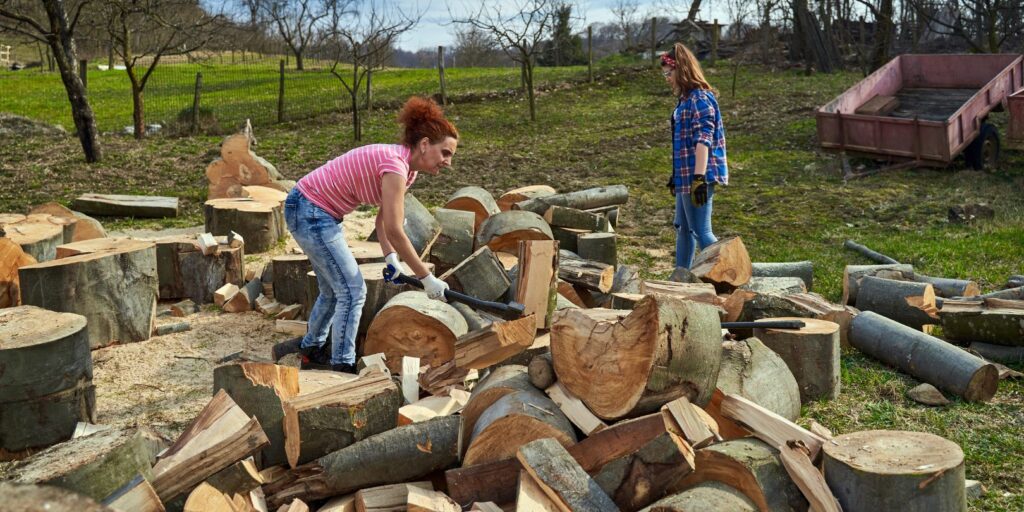How To Split Firewood Safely and Efficiently

One of the most common uses for firewood is to create a warm and cozy fire in your fireplace. But firewood needs to be split into smaller pieces before you can enjoy a nice fire. Splitting firewood can be daunting if you’re unsure how to do it safely and efficiently. This is why we’ve created this guide. In the following post, we’ll go over how to split firewood safely and efficiently so you can get your wood ready for burning in no time.
We’ll cover everything from the different types of splitting tools you’ll need to the basics of safe splitting. We’ll even cover how you can split firewood without tools if you don’t have access to any. So, if you’re ready to start, let’s jump in!
A Consideration of Required Tools
Before splitting firewood, it is important to consider the necessary tools for the job. Generally, this will include one or more of the following pieces of equipment: an axe, a maul, a wedge, and/or a log splitter. Each of these tools is designed with a specific purpose in mind and performs differently than the other. It is up to the user to decide which tool is most appropriate for the job at hand. It is important to note that some tools may require protective equipment for use, such as gloves, safety goggles, or a face mask.
Preparing the Logs
Before splitting logs, you must prepare them for use. This includes removing any bark from the logs using an axe maul or another appropriate tool. Bark can be extremely slippery when wet, making it difficult to maintain control over the logs during splitting. Additionally, you should clear off any debris on the logs before stacking, as rock and other materials can damage cutting implement blades over time and interfere with the even distribution of heat produced by firewood combustion within a heating appliance system.
Splitting the Logs
Splitting logs primarily aims to create pieces small enough to fit within fireplace inserts or stove units. Depending on your equipment, you may need to cut the logs into halves or quarters before further splitting them into smaller firewood pieces. If using an axe or maul, place the log on a cutting stump or log holder and use as flat a surface as possible when striking the tooling implement blade. Alternatively, if using a wedge or log splitter, wedge it between two pieces of wood with pressure applied so that you use adequate force when activating cutting devices like hydraulic ram systems. It is critical to exercise caution when operating any cutting tools and avoid contact with moving components at all times.
Stacking the Split Wood
Once you have cut the desired amount of logs into proper-sized pieces for use in heating appliances, it is time to stack them up for storage and drying. Stacking should follow proper safety protocols, such as ensuring any previously cut ends point downwards to avoid injury from sharp edges during later handling operations during moving and placement within appliance units. Additionally, stacks should be placed in dry locations away from flammable materials such as gasoline and propane tanks etc., if possible, allowing for proper air circulation and space between stacks in order to facilitate drying processes associated with producing ideal firewood dimensions for combustion processes in order to achieve optimal heat output from heating sources using wood burning apparatus like fireplaces and stoves etc. respectively.
Splitting firewood can be a risky and time-consuming task. But you can get the job done quickly and safely with the right tools and safety procedures. In this guide, we’ve discussed the different types of splitting tools you’ll need, how to prepare your logs for splitting, how to split your logs safely, and how to stack the split wood for storage and drying. With our helpful advice, you’ll be able to split firewood safely and efficiently in no time.
